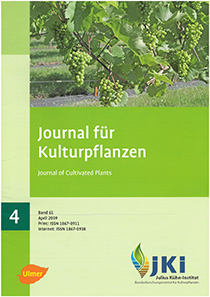Total Copper Contents in Apple Orchard Soils, Vineyard Soils and Hop-field Soils
Keywords:
Copper, soil, orchards, apple, vine, hop, fate, bio-concentration, regulationAbstract
A survey of data gained from literature concerning total copper contents found on areas of specialized crops under permanent use results in the following status:
a)The availability of data about total copper contents in areas under specialized cultivation that can be found in literature decreases along with the size of cultivated area in the following order: viticulture > apple culture > hop culture.
b)Vineyards treated with copper for many years (Mosel, Bordeaux, Champagne, Beaujolais, Rias Baixas) show on average higher total copper contents than vineyards that were newly developed within the last decades.
c)Long term applications of copper containing plant protection products result in all specialized crops (apple, grape, hops) in significant copper accumulation.
d)In the past, improper (increased) application rates of copper have resulted in extremely high total copper contents in some arable soils (some potato areas in Spain, vineyard soils in South Brazil) which are expected to cause phytotoxic damages as well as further consequences in the agro-ecosystem.
e)Even on highly contaminated sites, copper contents found in harvest products are low. Due to the uptake and distribution patterns of copper in plants of ligneous permanent crops (e.g. fruit trees, vine) a consumer risk resulting from the soil-plant path can be excluded. So far, there are no references reporting that high copper contents in soils result in high copper contents in harvest products. Consequently no usage limitations for copper fungicides are required.
DOI: 10.5073/JfK.2009.04.02, https://doi.org/10.5073/JfK.2009.04.02








